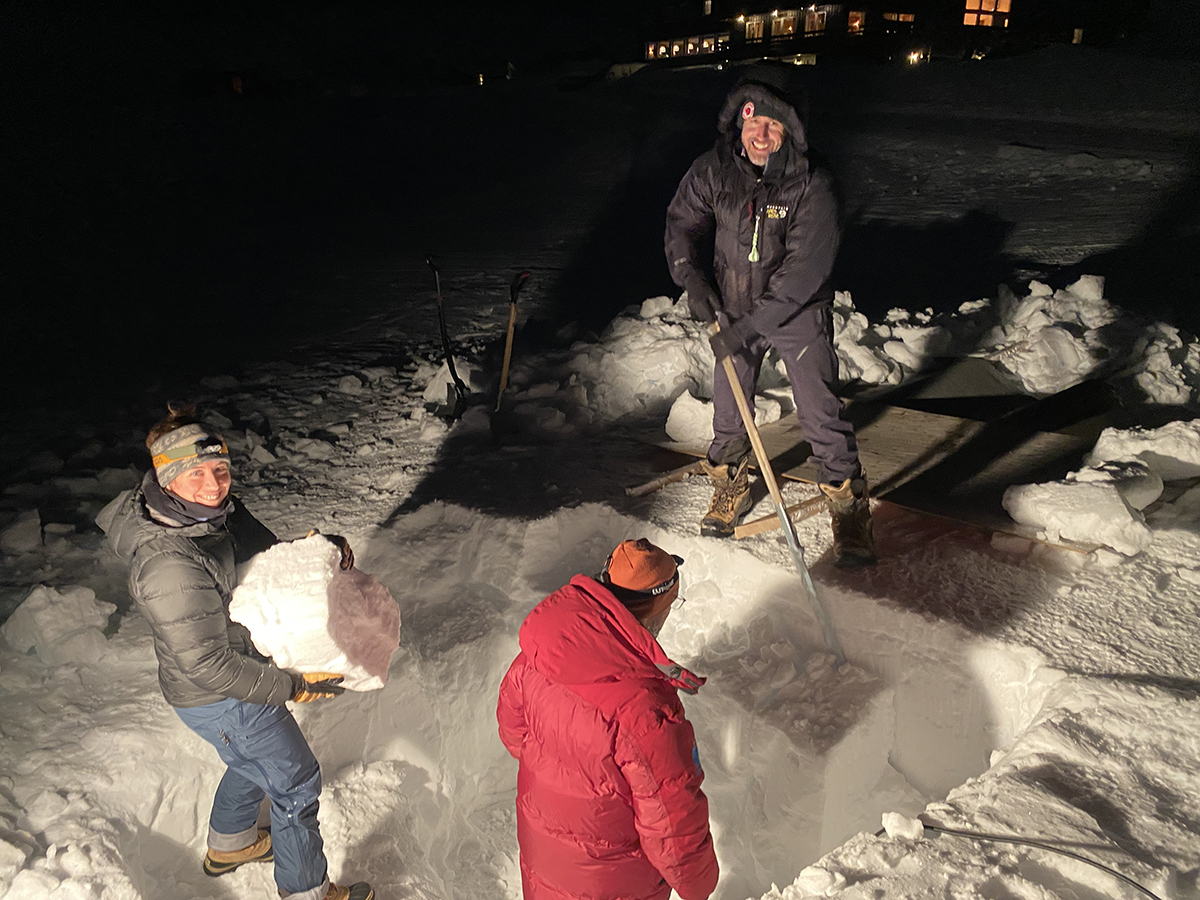Written by Julien-Pooya Weihs, Inès Ollivier and Clemens Spensberger from the Bjerknes Centre and the Geophysical Institute at the University of Bergen
Wednesday February 1st, Bergsjø. The thermometer outside by the window reads –15 ºC, and the frozen lake resonates with a deep cracking sigh, perhaps the last of the day. A few instants later, an otherworldly melody rises from the nearby igloo.
“All sounds emitted are from the ice”, Terje Isungset explains with his distinctive, calm voice.
Tonight, in his ephemeral dome of ice, he performs solo. The next days however, a crowd of musicians, plastic artists and climate scientists will join him to animate the 2023 edition of the Ice Music Festival. Taking place under a full moon, this year’s program puts a special emphasis on nature itself.

Speaking of ice in the ice
We arrive a day before the first ice instruments launch the festivities and sound for the public. We, the scientists, have come to facilitate a continuous discussion over five days: a discussion on ice, the cardinal element of this event, and its interactions with our planet’s climate.
With the visit of 120 schoolchildren over two days, three sessions for the general public in the festival schedule, one interactive concert and daily interactions with our surroundings, we talk snow, ice, earth-system, meteorology, glaciology, oceanography, physics, and even sometimes, ice acoustics with the other actors at the venue.
The installations, from an ice castle serving as the biggest scene of the event to the instruments played and art works displayed, are curated by students from the Makerere University in Uganda and the University of Bergen. The musicians come from all over Europe, and some members of the public from other continents, even. All want to know more about snow and ice: how they get created, how they behave, and they are going to change in the future.
During the days, Clemens Spensberger and Inès Ollivier welcome the public to a two meters deep backlit double snow trench. Large enough to host close to a dozen of visitors each, the two pits became places to talk about the weather of the past season read in the different layers of the snow, and the percolation of liquids through the snow. Temperatures were measured along the snowpack, leading to reflections on the warmest and the coldest points.

A hunt for snow crystals
Hans Christian Steen-Larsen lead his groups through a hunt for snow crystals of different shapes and sizes, looking at them through a magnifying glass. This gave the opportunity to talk about the water cycle, and the formation of the snow inside clouds.
A few meters from them, on the frozen surface of the Bergsjø lake, Julien-Pooya Weihs had cut and pulled several blocks of ice from the waters. With ropes and pulley systems, he discussed how these mini-glacier models of 120–150 kg could slide based on friction, driving forces and the surfaces they interact with. A zoom out back to larger scales extended the conversation to glacier dynamics, global warming, and feedback effects.
Kerim H. Nisancioglu both coordinated the efforts and featured as the main speaker for the interactive concert. Drawing from his vast experience with the Greenland ice sheet, he drew poetic parallels to the local conditions at the festival and answered live-questions from the performing musicians.

Created memories and ideas
We came back from Ål sitting in the train with a heart full of memories and a head full of new ideas. Communicating science at such high pace and in such an unusual setting triggers thoughts about the format of the event, the technical means and limitations, and the dialectics behind our various messages.
We overall felt great resonance with the artists, and undoubtable satisfaction to have reached so many children and adults alike: there is something noble and truly gratifying about generating curiosity and fostering knowledge in such a socially relevant area of natural science; what good is our work and our scientific findings if they don’t reach deep in and therewith contribute to society?

